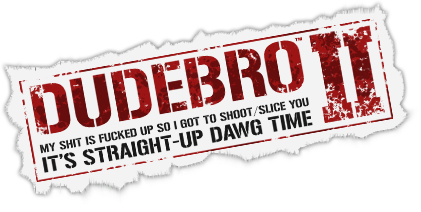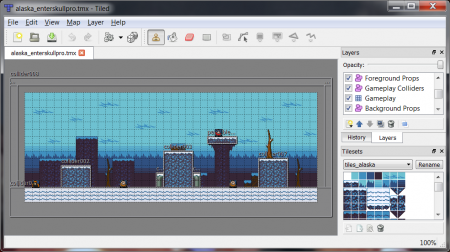For its levels, Dudebro II uses a common technique named tile maps: small square chunks of graphic data named tiles, in our case with a size of exactly 16×16 pixels, carefully placed and repeated screenwide on a 2D grid, the map.
This is how pretty much all 2D games used to be made back in the day, as it allowed to save resources and keep costs down. Of course, to create such maps, one can find plenty of tools around nowadays. For the game, we’ve decided to use Tiled Map Editor, a flexible editor with support for multiple layers of tiles, and whose main file format (.tmx, an XML-like document format) is widely supported and documented.
Why are we discussing this? Well, let’s just say that learning how our maps are structured may turn useful one day. For this reason, expect more details in a future update.

